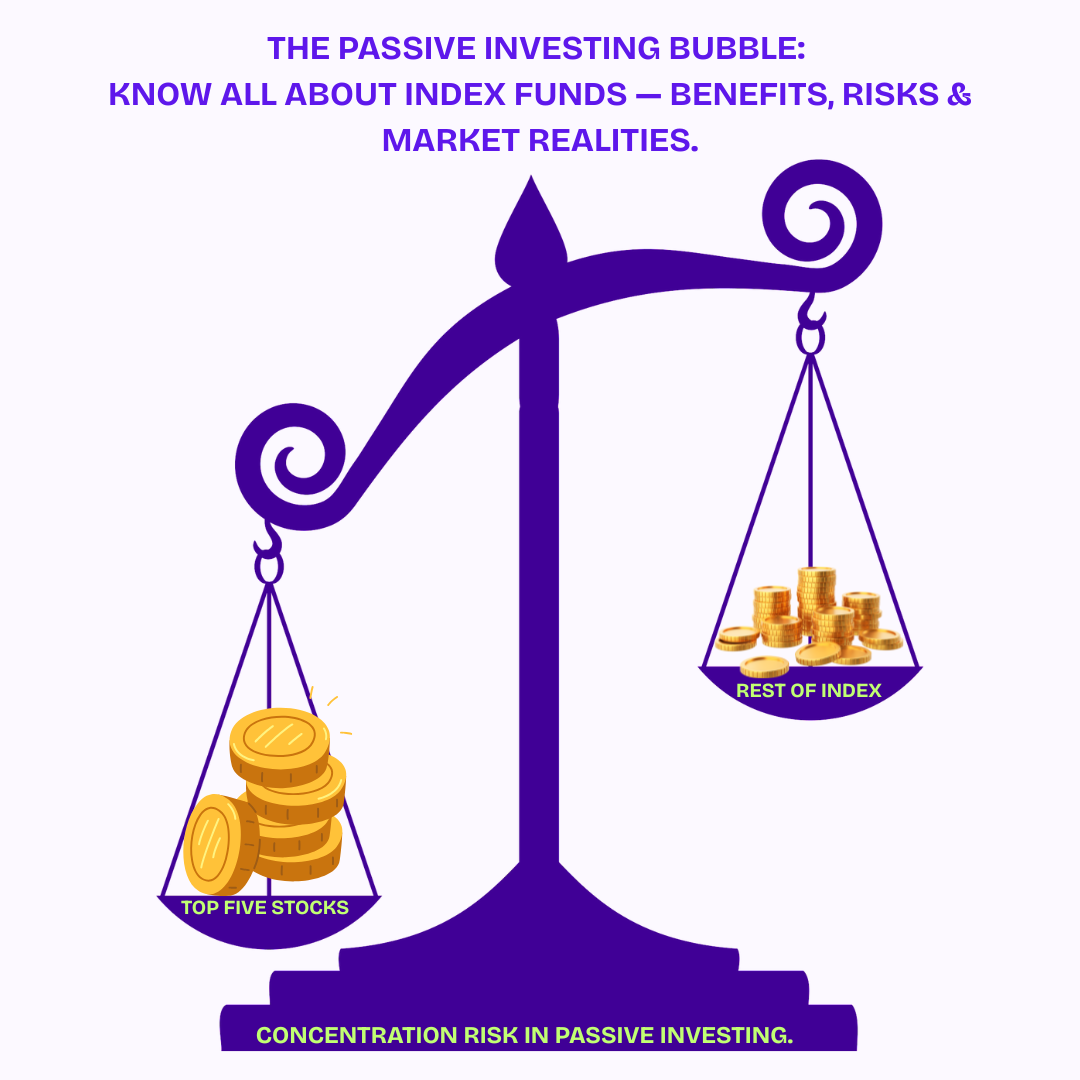
The Passive Investing Bubble: Know All About Index Funds — Benefits, Risks, and Market Realities
If there’s one trend that’s quietly reshaping both Indian and global markets today, it’s passive investing. From new-age investors just starting their SIPs to global institutions parking billions, index funds and ETFs have become the default choice. But as with any investing strategy, there’s more to the story than just low fees and market-matching returns.
As Vice Chairman of Berkshire Hathaway & also a successful investor, Charlie Munger once said: “The rise of index investing creates a huge paradox: It works best when relatively few people are doing it.”
Let’s unpack why passive investing is so popular, what risks it carries, and how you can use it wisely as an Indian investor today.
What Is Passive Investing?
Passive investing means putting your money into funds that simply mirror a market index — like:
These funds don’t pick stocks actively. They buy and hold all the stocks that make up the index, in the same proportion.
Why It Became Popular:
As Chairman & CEO of Berkshire Hathaway, Warren Buffett famously endorsed this approach:
“By periodically investing in an index fund, the know-nothing investor can actually outperform most investment professionals.”
— Warren Buffett
How Big Is Passive Investing in India Today?
According to AMFI (2025), passive funds in India now manage over ₹5 lakh crore in assets — a number that has tripled in just the last three years.
This surge is driven by:
The Other Side: What Are the Hidden Risks?
While passive investing sounds safe, here are key downsides novice investors often miss:
Concentration Risk:
Liquidity Risk:
No Quality Check:
When Did Passive Investing Take Over Globally?
Active vs. Passive: What’s the Balance?
Passive investing is powerful. But should it be your entire portfolio? Probably not. Here’s how to think about it:
Mix It Up: Combine index funds with mid-cap, small-cap, and actively managed funds.
Watch the Weightage: Be aware of how much of your index fund is concentrated in a few stocks.
Don’t Just Set and Forget: Review your portfolio at least once a year. Even passive needs maintenance.
Founder’s Perspective
“Balance simplicity with awareness. Passive investing isn’t wrong—it’s just incomplete if done blindly. Trends come and go, but thoughtful allocation always stays relevant.”
— Founder, NAM Securities Ltd.
Closing Thought
Index funds can be an excellent core holding for any investor. But as markets evolve, so must your strategy.
Passive investing is not a replacement for smart investing. It’s a tool—and like any tool, how you use it matters.
Before your next SIP, ask yourself:
If you’d like help understanding how to balance passive and active investments in your portfolio, feel free to reach out to NAM’s Team.
